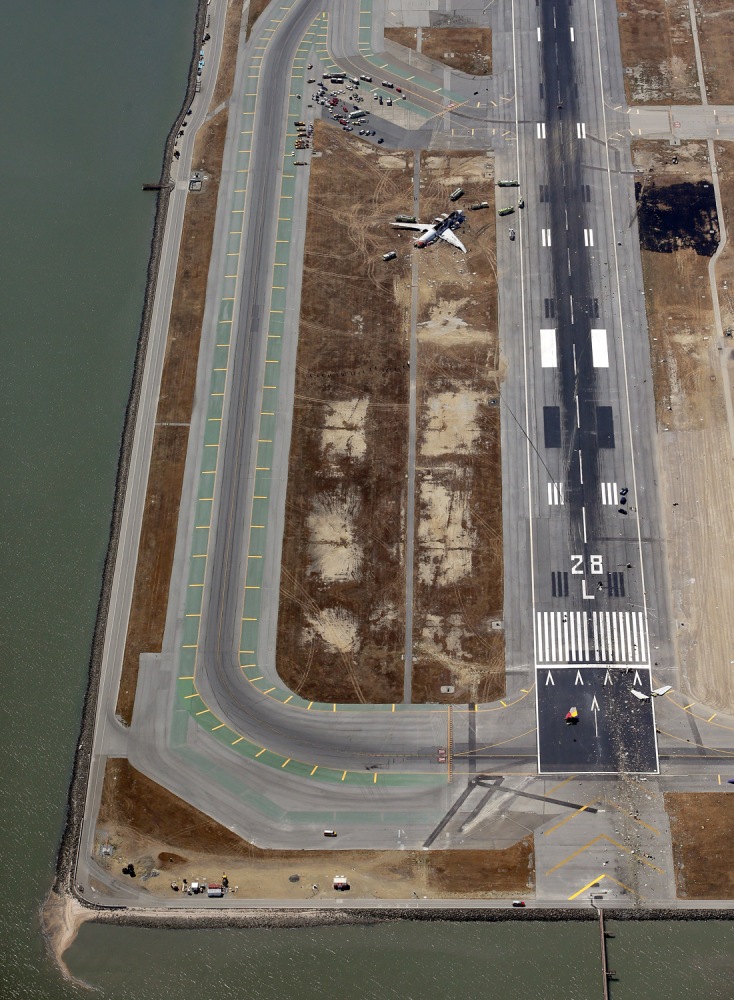Quote:
I haven't been into SFO in about 7 years but on every visual approach, we always have something loaded in the FMS for reference. If there's an ILS, we'll have that, if no ILS, we'll have the RNAV-GPS approach, if there is one, or perhaps if there is nothing for that runway, then most guys will load the runway/elevation/speed, with another point about 5 miles out with an altitude and speed loaded on the Legs Page, so we have something to look at on the ND, for vertical guidance.
We have heard that the Asians like to use all the automation, all the time, but does SFO have a RNAV-GPS approach to 28L? Did they have that loaded, and were they in LNAV/VNAV until autopilot disconnect at 1,600'?
Originally Posted by Timbo
Has anyone (at NTSB or elsewhere) said exactly what they had loaded into the FMS yet? I haven't been into SFO in about 7 years but on every visual approach, we always have something loaded in the FMS for reference. If there's an ILS, we'll have that, if no ILS, we'll have the RNAV-GPS approach, if there is one, or perhaps if there is nothing for that runway, then most guys will load the runway/elevation/speed, with another point about 5 miles out with an altitude and speed loaded on the Legs Page, so we have something to look at on the ND, for vertical guidance.
We have heard that the Asians like to use all the automation, all the time, but does SFO have a RNAV-GPS approach to 28L? Did they have that loaded, and were they in LNAV/VNAV until autopilot disconnect at 1,600'?
I agree Timbo. As Jungle and others have pointed out, this accident was an "automation" and CRM issue; not a stick and rudder problem. To those that said they were "tired" after a long flight...bull**.
First of all, all visual approaches must be backed up by some instrument approach procedure. If it's clear and a million and you want to hand fly the approach, go for it. I do it all the time; however, there is something installed in the box for every approach. The 777, like a lot of other FMC systems, allow for the construction of an approach even if the runway doesn't have one installed. We learned that in initial sim training and as part of our type ride or company checkride, a visual approach with NO vertical or lateral guidance must be flown properly. We would "construct" an approach and the 777 software gives one a 3.5 degree glide slope (that can even be a variable) from the end of the runway. It even had a "Chinese glide slope" as we called it, that displays just like an ILS glide slope on a visual approach. It's simple.
In my view, and I've worked with many Asian pilots, there is a over dependance on automation. Some of that is cultural and some of it from their training. It doesn't mean the Korean pilots aren't smart; they are but are trained to use the autopliots/autothrottles to excess. Nuff' said.
This accident was a pilot undergoing IOE with a Check Airman/IOE Instructor who was behind the eight ball for whatever the reason. That will come out of the investigation. What I still can't understand is, and please help me....how this accident happened in an aircraft that has a ton of software to facilitate approaches and landing and is so easy to fly and land.
At a Loss for an explanation.... G'Day Mates



